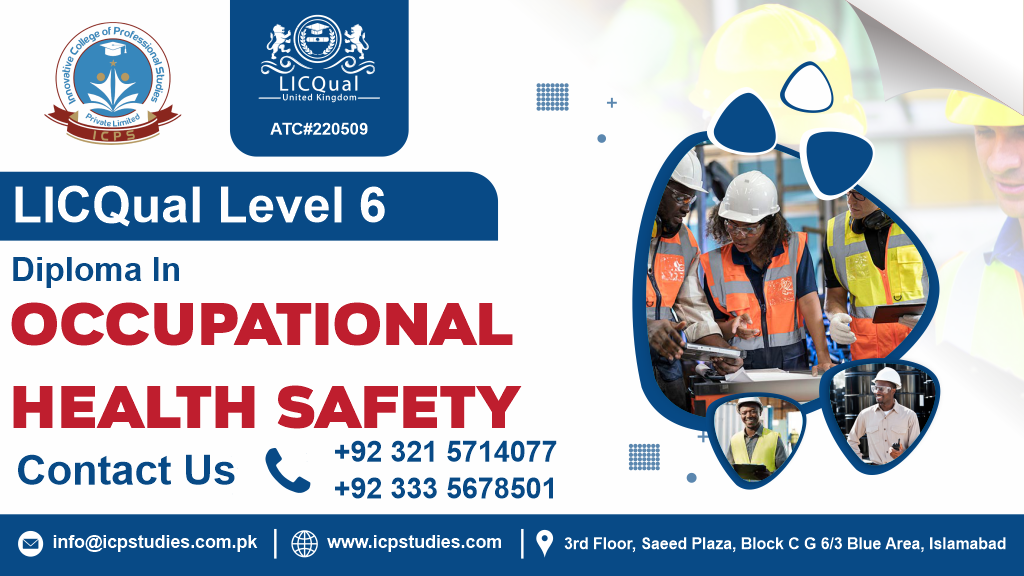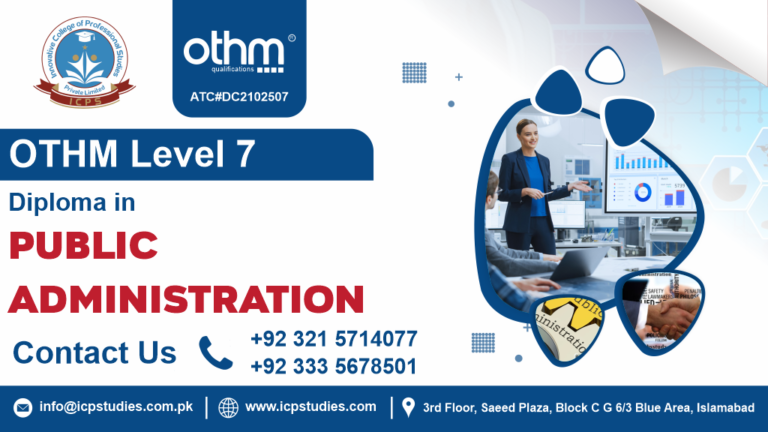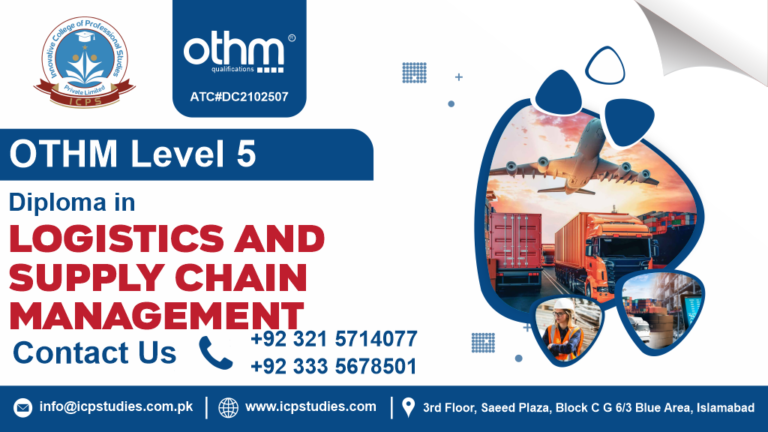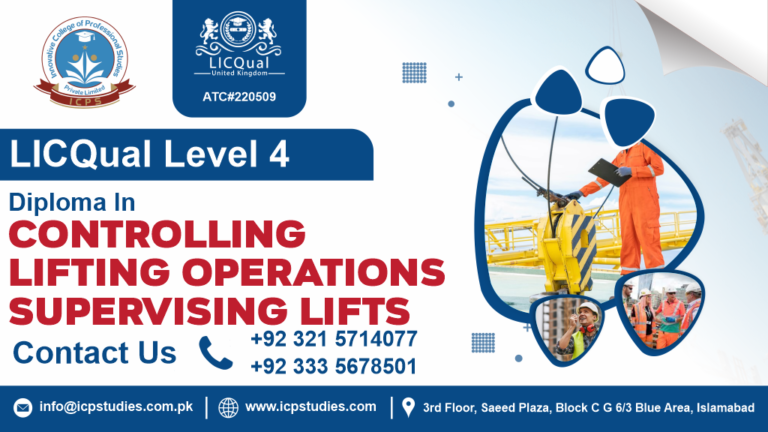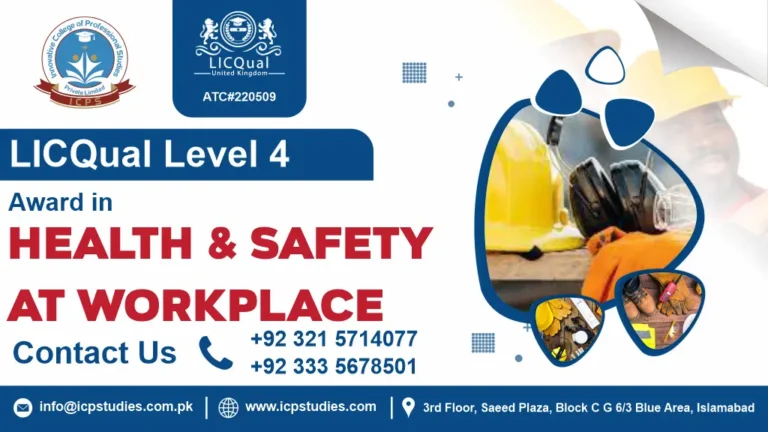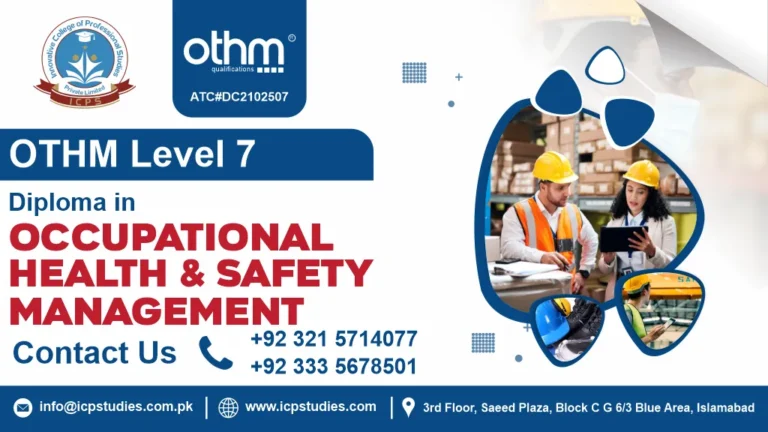Our Level 6 Diploma program offers an advanced curriculum designed to equip professionals with the in-depth knowledge, practical skills, and strategic insights needed to excel in complex occupational health and safety environments. From risk management to regulatory compliance, you’ll delve into advanced topics essential for effective leadership in the field.
LIQual is globally recognized for its commitment to excellence in education and training. By earning your Level 6 Diploma, you’ll enhance your credibility and distinguish yourself as a leader in occupational health and safety management, opening doors to exciting career opportunities worldwide.
Whether you’re looking to advance into senior management roles, transition into consulting, or lead health and safety initiatives within your organization, this diploma prepares you to excel. Employers value professionals with advanced qualifications who can drive innovation and ensure the well-being of their workforce.
We understand that balancing work, life, and study can be challenging. That’s why we offer flexible learning options, including online courses and part-time study, allowing you to pursue your diploma while accommodating your busy schedule.
Dive deep into risk assessment methodologies, hazard identification techniques, and advanced risk mitigation strategies to proactively manage workplace risks and ensure a safe environment for all.
Don’t wait any longer Enroll now and embark on a transformative journey towards professional excellence and leadership in occupational health and safety.
All About Level 6 Diploma in Occupational Health Safety
Course Overview
The LIQual Level 6 Diploma in Occupational Health Safety is an advanced qualification designed for professionals who are already established in the field of occupational health and safety and are looking to further enhance their knowledge, skills, and credentials. This diploma program offers an in-depth exploration of advanced concepts, methodologies, and strategies relevant to managing workplace safety and health effectively.
Participants delve into advanced risk assessment techniques, hazard identification methodologies, and sophisticated risk mitigation strategies to proactively manage workplace risks and hazards across various industries and sectors.
The program covers complex health and safety legislation, regulations, and standards at national and international levels. Participants learn to navigate legal frameworks, interpret regulatory requirements, and ensure compliance to mitigate legal risks effectively.
Participants develop strategic leadership skills essential for driving organizational change, fostering a culture of safety, and influencing decision-makers at all levels to prioritize health and safety within the workplace. Emphasis is placed on strategic planning, stakeholder engagement, and organizational communication.
The diploma equips participants with expertise in developing robust emergency response plans, crisis management protocols, and business continuity strategies. Participants learn to anticipate and respond effectively to emergencies, minimize disruptions, and protect the well-being of employees and assets.
The LIQual Level 6 Diploma in Occupational Health Safety is a prestigious qualification that empowers professionals to advance their careers, lead organizational change, and make a meaningful impact in ensuring the safety, health, and well-being of workers in diverse workplaces worldwide.
Study Units
Learning Outcomes
Here are the outcomes corresponding to each of the study units:
- Principles & Policy of Occupational Health and Safety:
- Outcome: Participants will gain a thorough understanding of the fundamental principles, concepts, and legislative frameworks governing occupational health and safety. They will be able to interpret and apply relevant policies and regulations to ensure compliance and promote a safe work environment.
- Occupational Health and Safety Practice:
- Outcome: Participants will develop practical skills in implementing health and safety protocols, procedures, and best practices in various workplace settings. They will be able to identify hazards, assess risks, and implement appropriate control measures to mitigate occupational health and safety risks effectively.
- Occupational Health and Safety Positive Culture:
- Outcome: Participants will learn strategies for fostering a positive safety culture within organizations, including promoting awareness, engagement, and accountability among employees. They will be able to lead initiatives to cultivate a workplace culture that prioritizes safety and well-being.
- Occupational Health and Safety and People:
- Outcome: Participants will understand the relationship between occupational health and safety and the well-being of individuals in the workplace. They will develop skills in promoting employee health, well-being, and resilience, fostering a supportive work environment that enhances productivity and morale.
- Occupational Health and Safety Compliance:
- Outcome: Participants will be equipped to ensure organizational compliance with relevant health and safety legislation, regulations, and standards. They will develop expertise in identifying legal requirements, implementing compliance measures, and mitigating legal risks.
- Occupational Health and Safety – Monitoring Systems:
- Outcome: Participants will learn how to develop and implement monitoring systems to track and evaluate health and safety performance within organizations. They will be able to collect data, analyze trends, and identify areas for improvement to enhance workplace safety continuously.
- Risk Assessment and Risk Management:
- Outcome: Participants will gain proficiency in conducting comprehensive risk assessments, identifying workplace hazards, and prioritizing risks. They will develop skills in implementing risk management strategies to control hazards and prevent occupational injuries and illnesses.
- Occupational Health and Safety Review Systems:
- Outcome: Participants will learn how to establish review systems to assess the effectiveness of health and safety programs and initiatives. They will be able to conduct periodic evaluations, identify strengths and weaknesses, and implement corrective actions to improve occupational health and safety performance.
These outcomes collectively equip participants with the knowledge, skills, and tools needed to effectively manage occupational health and safety in the workplace, foster a positive safety culture, ensure compliance with regulations, and promote the well-being of employees.
Admission Criteria
Here are the typical entry requirements for the LIQual Level 6 Diploma in Occupational Health and Safety:
- Educational Background:
- Applicants are generally required to hold a relevant undergraduate degree or equivalent qualification. This may include degrees in occupational health and safety, environmental health, public health, engineering, or related fields.
- Work Experience:
- While not always mandatory, many programs prefer candidates with relevant work experience in occupational health and safety, risk management, environmental health, or a related field.
- Typically, candidates are expected to have a minimum of two to five years of work experience in a relevant industry or occupational setting.
- Professional Qualifications:
- Some programs may require applicants to hold specific professional certifications or qualifications in occupational health and safety, such as NEBOSH (National Examination Board in Occupational Safety and Health) certifications or equivalent credentials.
- English Language Proficiency:
- Since the course materials and assessments are often conducted in English, applicants may be required to demonstrate proficiency in the English language.
- This can be proven through standardized tests such as the TOEFL (Test of English as a Foreign Language) or IELTS (International English Language Testing System), or through other recognized language proficiency assessments.
- References or Recommendations:
- Applicants may be asked to provide letters of recommendation or references from employers, supervisors, or academic instructors who can attest to their suitability for the program. These references may speak to the applicant’s academic achievements, work ethic, and relevant skills and experiences.
- Statement of Purpose or Personal Statement:
- Some institutions may require applicants to submit a statement of purpose or personal statement outlining their reasons for applying to the program, career goals, relevant experiences, and how they believe the program will benefit them professionally.
- Interview:
- Depending on the institution, applicants may be required to participate in an interview as part of the admissions process. The interview may assess the applicant’s suitability for the program, their understanding of occupational health and safety concepts, and their motivation for pursuing further education in the field.
- Additional Requirements:
- Depending on the program and institution, there may be additional requirements such as completion of prerequisite courses, submission of a resume or curriculum vitae (CV), or completion of a pre-admission assessment or test.
Prospective students are encouraged to carefully review the entry requirements outlined by the institution offering the course and ensure that they meet all criteria before applying.
Ideal Candidate
This course is suitable for a diverse range of professionals, including:
- Occupational Health and Safety Practitioners: Professionals already working in the field of occupational health and safety who seek to deepen their expertise, broaden their knowledge, and advance their careers in health and safety management.
- Safety Managers and Officers: Individuals responsible for overseeing health and safety practices within organizations, including safety managers, officers, coordinators, or consultants, who wish to enhance their leadership skills and strategic capabilities.
- Human Resources (HR) Professionals: HR professionals involved in developing and implementing health and safety policies, procedures, and programs within their organizations, who seek to strengthen their understanding of health and safety principles and practices.
- Environmental Health Officers: Professionals working in environmental health, public health, or regulatory enforcement roles who want to expand their knowledge and skills in occupational health and safety management.
- Facility Managers and Supervisors: Facility managers, operations managers, and supervisors responsible for workplace safety and health who aim to develop advanced competencies in risk management, compliance, and leadership.
- Industry Specialists: Professionals working in specific industries or sectors such as construction, manufacturing, healthcare, oil and gas, transportation, or mining, where occupational health and safety risks are prevalent and require specialized expertise.
- Recent Graduates and Career Changers: Graduates with a background in health sciences, environmental sciences, engineering, or related fields who are seeking to enter the occupational health and safety profession and want to acquire the necessary qualifications and skills to succeed.
- Aspiring Health and Safety Leaders: Individuals aspiring to lead health and safety initiatives within organizations, drive organizational change, and create a positive safety culture that prioritizes the well-being of employees.
This course caters to a diverse range of professionals who are dedicated to creating safer and healthier workplaces, advancing their careers, and making a meaningful impact in the field of occupational health and safety. Whether you’re looking to deepen your expertise, expand your career opportunities, or lead organizational change, the LIQual Level 6 Diploma in Occupational Health and Safety provides the knowledge, skills, and credentials to help you achieve your goals.
FAQs about Level 6 Diploma in Occupational Health Safety

